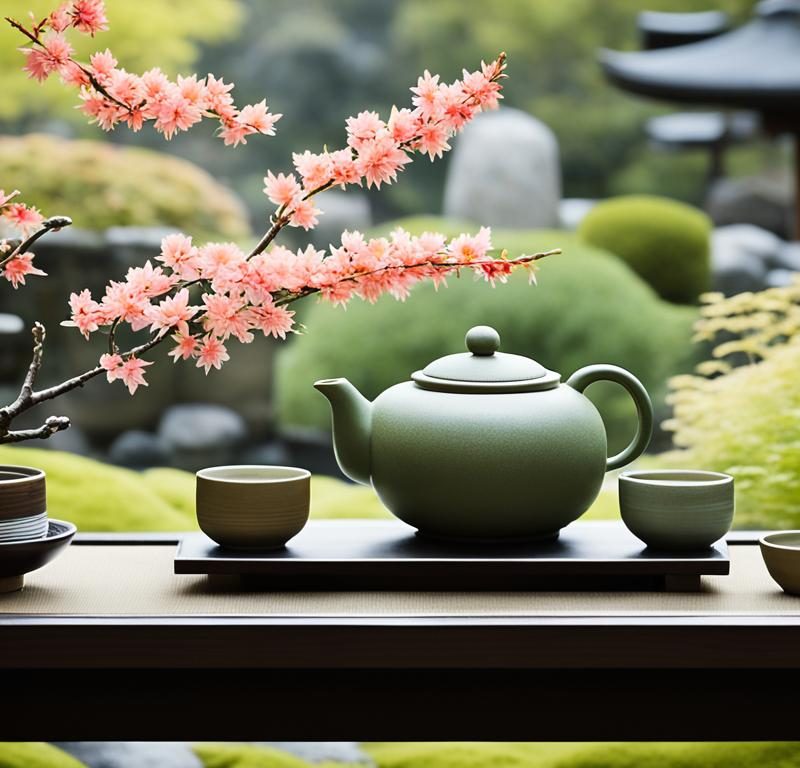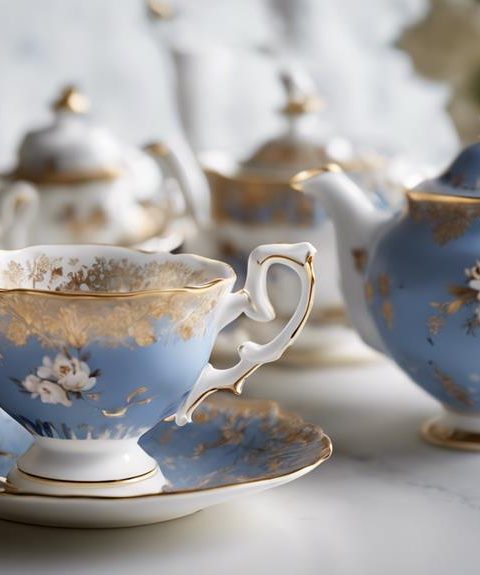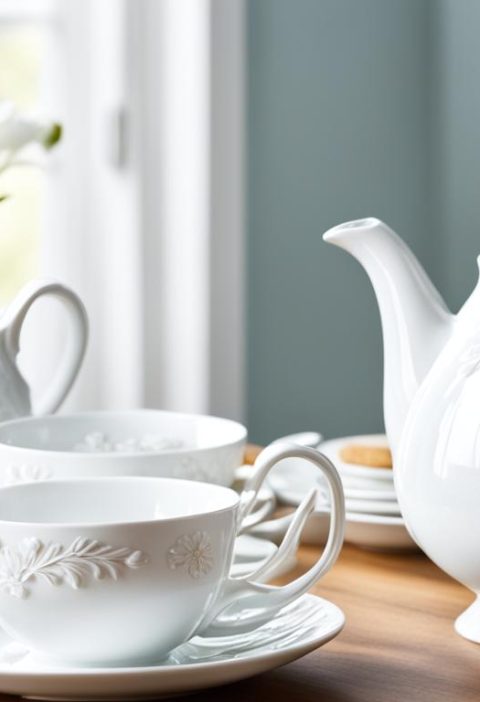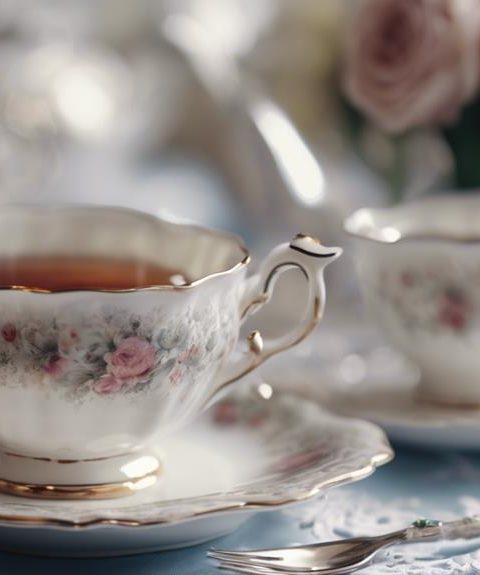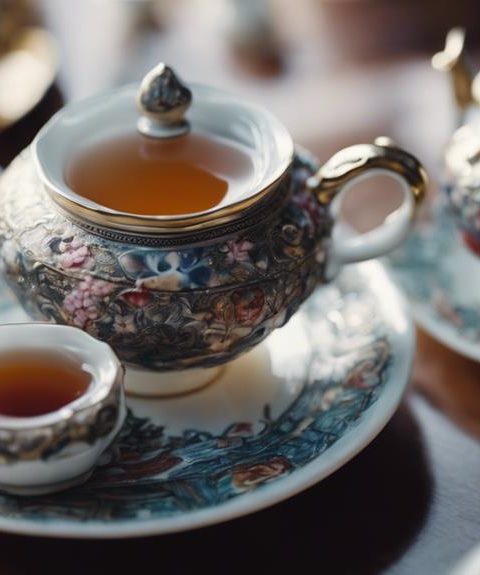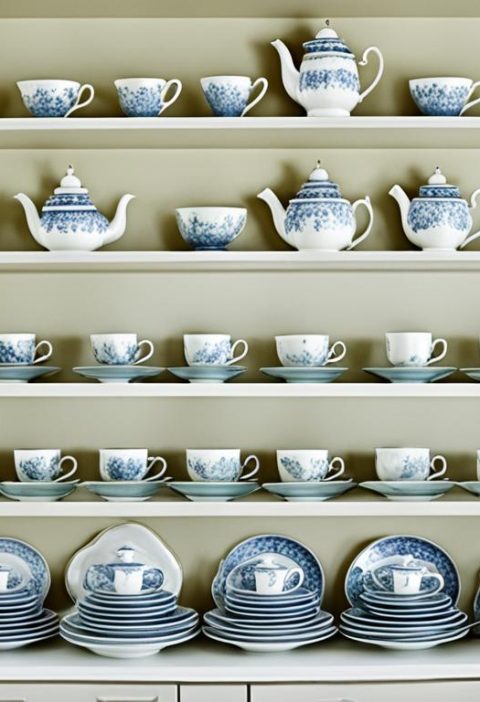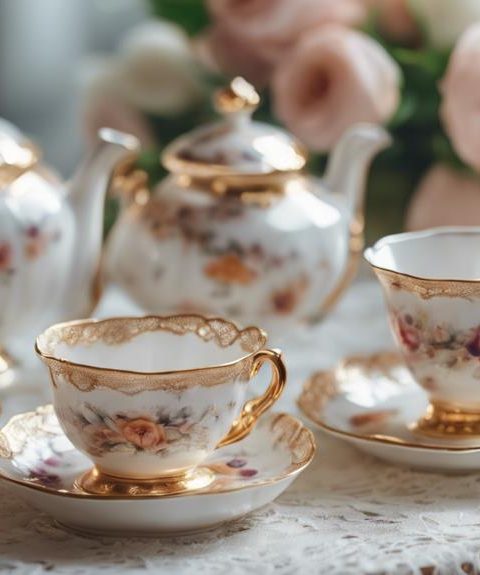Ikebana is a special art from Japan. It’s about arranging flowers and natural items in a beautiful and balanced way. This has a key role in tea ceremonies, adding to the scenery and overall mood. In this article, we’ll look into making ikebana for tea times, forming chabana, and how this art has changed over time.
What is Ikebana?
Ikebana means the “way of flowers.” It started in China and became big in Japan. This art focuses on putting flowers, branches, and leaves together in a careful way. It’s not just about looking pretty. Ikebana shows the beauty of being simple and our strong link with nature.
The Subtleties of Chabana
Chabana, made for tea ceremonies, follows the wabi-sabi ideas. This means it finds beauty in what’s not perfect and in things that don’t last. Chabana looks simple, but it’s full of meaning. The chosen flowers and other items show the time of year and make tea times peaceful.
Making a Chabana Flower Arrangement
To make a chabana, you need to really know the rules of ikebana and what tea ceremonies need. It’s all about the details and making something simple that catches the eye. The flowers must match the season and set the right mood. You often see odd numbers of flowers or branches and different shapes to create harmony.
Ikebana in Different Tea Ceremonies
Ikebana is a big part of many tea ceremonies, like Japan’s chanoyu and China’s gongfu cha. In Japan, there’s always a chabana to make everything feel peaceful and beautiful. In China, using flowers in tea ceremonies changes according to the tea master. But, both places agree that beauty, calm, and nature are very important.
The Evolution of Ikebana
Ikebana has changed and grown over time. New styles, like freakebana, mix the old with the new. This makes ikebana appeal to more people, from the traditional to the trendsetter. Now, ikebana is full of life and creativity.
The Essence of Ikebana
The heart of ikebana is in how it celebrates the beauty of things that don’t last. Unlike Western styles, ikebana is about the perfect balance of a few elements. By arranging flowers and nature items, ikebana makes us think about the beauty around us, just for a moment.
Conclusion
Ikebana and chabana show the deep connection with nature in Japanese culture. Making these for tea times makes everything more beautiful and peaceful. Whether it’s the old style or the new, ikebana makes beauty tangible in a very special way.
Key Takeaways
- Ikebana is a traditional Japanese art form that involves the skillful arrangement of flowers and natural materials.
- Chabana arrangements are specifically created for tea ceremonies, following the principles of simplicity and the reflection of the seasons.
- The process of making a chabana arrangement requires attention to detail and an understanding of the principles of ikebana.
- Ikebana plays an integral role in various tea ceremonies, enhancing the sense of harmony and beauty.
- Ikebana has evolved over time, embracing contemporary styles and interpretations while preserving its essence.
What is Ikebana?
Ikebana is the traditional Japanese art of flower arrangement. It means “the way of flowers.” It involves arranging flowers and natural items in a very stylized way. Originating in China, it later became important in Japan.
More than just arranging flowers beautifully, Ikebana expresses beauty and spirituality. It does this through floral design. This art form is deeply connected to the meaning of beauty and nature.
There are many uses for Ikebana. This includes making special arrangements for different events. The art plays a big part in the Japanese tea ceremony. Here, people serve and drink tea in a calm, careful way.
Chabana, the flowers used in the tea ceremony, are critical. They help set the right mood and show the bond between nature and people.
Chabana isn’t just for looks. They are chosen and put together to show the current season’s beauty. These arrangements are simple, yet elegant. They make the tea ceremony more peaceful. They also help the people in it feel closer to nature.
Benefits of Ikebana in Tea Ceremonies
Ikebana in the tea ceremony does more than look pretty. It does several key things:
- It makes the tea ceremony a peaceful, beautiful event. This benefits how everyone feels.
- It reminds everyone of the link between people and nature. This promotes love and respect for the environment.
- It makes the tea ceremony stand out, making it an engaging, sensory experience for all.
- Shows the beauty of each season. This helps everyone think about time and nature’s beauty.
- By being simple and beautiful, it encourages deep thinking and finding peace.
The connection between Ikebana and the tea ceremony shows Japan’s love for beauty, nature, and thought. Using Ikebana and tea ceremonies together offers a deep, enjoyable experience. It helps people connect with their world. Also, it celebrates the beauty found in simple things.
| Ikebana in Tea Ceremonies | Tea Ceremony Type |
|---|---|
| Japanese tea ceremony | chanoyu |
| Chinese tea ceremony | gongfu cha |
The Subtleties of Chabana
Chabana is a special type of floral design for tea ceremonies. It focuses on the wabi-sabi philosophy. This means it values simplicity and a quiet kind of beauty. Chabana’s goal is not to be the star of the show, but to gently remind us of nature.
These flower designs are simple, usually only a few blooms. They are chosen carefully. They reflect what’s happening in nature at that moment. This makes the atmosphere quiet and reflective, just like the tea ceremony itself.
What are the key principles of chabana?
Chabana connects with wabi-sabi’s ideas of finding beauty in simple, natural things. Its main rules are about being simple and choosing natural items carefully. We say chabana is about:
- Subtlety and understatement
- Harmony with nature
- Selecting flowers that fit the season
- Being simple and elegant
How does chabana enhance the tea ceremony experience?
Chabana helps make the tea ceremony special. It does this by bringing a sense of peace and unity. With simple flowers, everyone can pay full attention to the tea ritual and enjoy nature’s beauty too.
Chabana’s flowers change with the seasons. This makes the tea room feel more in tune with the outside world.
What types of flowers are commonly used in chabana?
Chabana uses native Japanese flowers that each tell a story. You might see cherry blossoms, chrysanthemums, or peonies. They stand for things like strength and pure beauty, adding deeper meanings to the ceremony.
Can you create your own chabana arrangement?
Yes, absolutely! Making your own chabana is both fun and meaningful. Pick a flower or some natural elements that feel right for the season. Then, keep it simple and well-balanced. Let the flower or element’s natural beauty shine.
Don’t be afraid to try different vases. Finding the right one is part of the creativity.
How does chabana differ from other floral arrangements?
Chabana is different because it’s all about simplicity and our link to nature. It’s not showy like some Western flower designs. Instead, it’s calm and peaceful. This makes the tea ceremony even more special.
| Key Features of Chabana | Other Floral Arrangements |
|---|---|
| Simplicity and understated elegance | Elaborate and ornate designs |
| Use of seasonally appropriate flowers | Less emphasis on seasonal flowers |
| Minimalistic arrangements | Abundance of flowers and foliage |
| Symbolic meanings and connection with nature | Varied themes and decorative motifs |
Making a Chabana Flower Arrangement
Making a chabana flower arrangement for tea ceremonies is an artistic process. It needs focus on small details and knowledge of wabi-sabi principles. The arrangement’s beauty comes from its simplicity. It should not be too big or complicated. This way, it fits perfectly in the tea room without standing out too much.
Choosing the right flowers is crucial for a chabana. You should think about what is in season. This makes sure the arrangement matches the natural world outside. It also makes the tea ceremony feel connected to the current season, making the experience more enjoyable.
In a chabana, it’s common to use an odd number of flowers or branches. This is because it’s thought to make the design look better. Different shapes and sizes add to its appeal, making it interesting to look at. It’s like a beautiful puzzle that draws people in.
For containers, you have many options like vases, baskets, or bamboo tubes. Each one adds its own special touch to the flowers. The right choice can make the whole set up more meaningful. Pick one that fits the vibe you want for your tea ceremony.
Making chabana is both an art and a tradition. It’s about finding the right balance, combining artistic freedom with old rules. The result is a decoration that makes the tea ceremony not just beautiful but also meaningful. It reflects the wonders of nature around us.
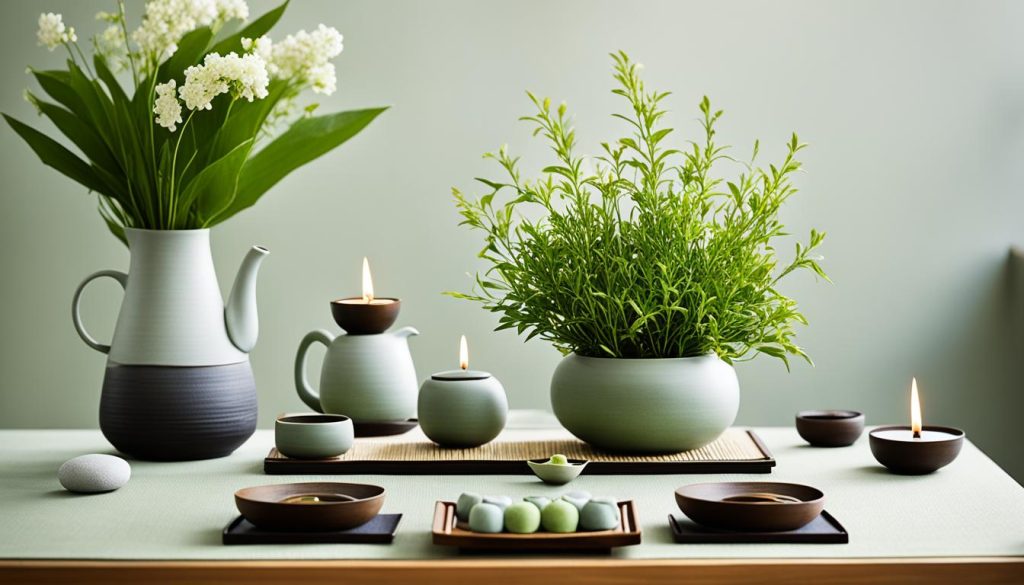
Ikebana in Different Tea Ceremonies
Ikebana and chabana arrangements are key in tea ceremonies. They add beauty and nature’s spirit to the ritual. In the Japanese tea ceremony, called chanoyu, chabana is always there. It helps make the setting peaceful and filled with harmony.
Chabana plays a big part in making the tea ceremony better. These flower arrangements show the time of year and the beauty of nature. ikebana in tea ceremonies shows how nature, people, and sharing tea are all connected.
Now, in the Chinese tea ceremony, known as gongfu cha, using flowers is up to the tea master. Though not a must, tea masters might add flowers. This is to make the tea time more special and to connect with the beauty of the surroundings.
Both tea ceremonies use ikebana to show their art and beliefs. This makes the tea space calm and beautiful. It’s perfect for making and drinking tea.
Key Differences Between Japanese and Chinese Tea Ceremony Flower Arrangements:
| Japanese Tea Ceremony | Chinese Tea Ceremony |
|---|---|
| Chabana arrangements are always present | Flower arrangements are optional |
| Emphasizes seasonality and natural beauty | Flower arrangements are optional |
| Create a harmonious and serene atmosphere | Can enhance the tea experience |
Despite these differences, both ceremonies deeply value beauty and nature. Ikebana and chabana make tea times more beautiful, peaceful, and harmonious. They turn tea drinking into a full experience, beyond just taste.
The Evolution of Ikebana
Over the years, ikebana has grown from a simple art to a lively one. It now combines old and new ideas. Japanese flower arranging keeps getting better with fresh styles and new ways to look at the tradition.
Ikebana, or the “way of flowers,” has won over fans worldwide with its beauty. It’s deeply tied to nature. While many love the classic ikebana, some are exploring new paths with freakebana. This new style really pushes the limits of what’s possible.
Freakeba frees artists from the old rules, letting them use different materials and shapes. This new thinking in flower art is all about daring to be different. It’s made ikebana even more interesting for those who love creativity.
With freakebana, artists are using things like found objects and unusual plants. This bold approach makes ikebana appeal to a broader range of fans. They like its modern look and unique ideas.
The Rise of Freakebana: Embracing Creativity and Individuality
Freakebana is especially popular with young artists. It offers a chance to break away from the old ways. This modern take is all about showing who you are and trying new things.
Freakebana finds beauty in what’s not perfect, like things not matching up just right. This idea really catches your eye and makes you think. It’s a totally new view on ikebana.
Unlike the careful, precise work of traditional ikebana, freakebana is more free and natural. Artists let the beauty of their materials speak for itself. It’s about capturing the true nature of each piece.
Freakebana art often shows fresh, new ideas. From wild designs to out-of-the-box thinking, these works share the artist’s own view. They’re a look at what’s new and different in art today.
https://www.youtube.com/watch?v=K0XxR1w4r8I
The Influence of Freakebana on Tea Ceremony Floral Designs
Freakebana has changed the look of tea ceremony flowers. It brings in new styles and personal touches. While the traditional chabana is still loved, freakebana is a fun, new choice.
These modern tea flowers use exciting plants and colors. They make tea ceremonies feel both new and relaxing. It’s a cool mix of classic and modern.
Freakebana lets tea experts and fans try new things. They can explore lots of styles and ideas in Japanese flower art. It’s all about bringing new life to these special ceremonies.
Embracing the Evolution of Ikebana
Ikebana’s growth has kept it true to Japanese culture and thought. It mixes tradition with new ways to look at things. This mix draws people from everywhere to enjoy ikebana.
Whether you love the classic ikebana or the new freakebana, Japanese flower art has something for you. It’s a way to be creative, express yourself, and connect with nature.
| Traditional Ikebana | Freakebana |
|---|---|
| Follows established guidelines and principles | Encourages experimentation and breaking conventions |
| Emphasizes simplicity and harmony | Celebrates individuality and asymmetry |
| Incorporates traditional vessels and plant materials | Explores unconventional materials and non-traditional vessels |
| Reflects seasonal and natural elements | Incorporates contemporary concepts and themes |
Whether you enjoy the traditional or like to explore, ikebana has so much to offer. With its tea flowers and bold designs, it always inspires. It shows off the beauty and adaptability of this classic art.
The Essence of Ikebana
At its core, Ikebana is about capturing the beauty of things that do not last. It aims to show a perfect balance and harmony. In Western flower art, we see a lot of symmetry and flowers everywhere.
But Ikebana is different. It’s about simplicity and using just a few things. By doing this, it creates a special bond between nature’s gifts and the space they fill. It makes you stop and admire the beauty around you.
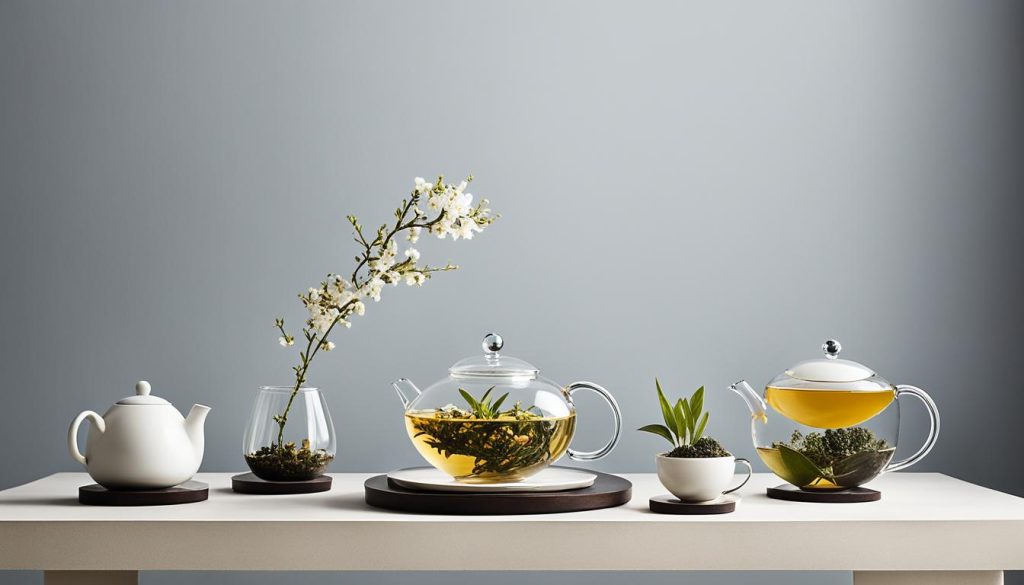
Ikebana shows Japan’s love for nature in an art form. It turns plant parts into a message of simplicity, balance, and harmony. Making an Ikebana piece is precise and requires deep thought in selecting each piece.
Every branch, stem, and leaf is intentionally placed to tell a story. It’s an art that goes beyond mere looks, showing nature’s deeper meaning.
Frequently Asked Questions
1. How are Zen floral arrangements different from Western floral arrangements?
Ikebana, or Zen floral arrangements, stands apart from Western flower styles. Western designs are full and even, but Ikebana values space and simplicity. It captures the beauty of imperfection to inspire peace and harmony.
2. What are the key elements of Japanese flower arranging?
Japanese flower arranging is about more than just putting flowers together. It uses asymmetry, keeping things simple, and Ma, the space between items. Ikebana often has a single focus flower or group of flowers with branches.
3. How does Zen floral arrangement create a harmonious ambiance?
Ikebana doesn’t just arrange flowers; it arranges space and feelings. By placing elements just right, it brings a sense of peace and balance. This makes the design feel like a part of the Zen philosophy come to life.
4. What role does impermanence play in Zen floral arrangements?
Impermanence, a key Zen idea, is shown in Ikebana’s use of changing, even decaying, materials. It reminds us of life’s temporary nature and celebrates beauty in every stage. This makes Ikebana more than a decoration; it’s a lesson in appreciating time’s passing beauty.
5. Can anyone practice Japanese flower arranging?
Indeed, Japanese flower arranging is for anyone wanting to delve into its beauty. You need to be ready to learn, be patient, and follow its rules. It’s not hard to get started, with many starting classes and workshops welcoming beginners.
6. How does Zen floral arranging relate to the Japanese Tea Ceremony?
Chabana, or Zen floral arranging, has a key part in the Japanese Tea Ceremony. These arrangements are made to enhance the calm feel of the ceremony. They show the deep connection between people and the natural world.
7. Are there different styles of Japanese flower arranging?
Yes, Ikebana has many styles, each with its own rules and beauty. This allows artists to show their creativity while respecting Ikebana’s traditional values and methods.
8. How can I learn more about Zen floral arrangements and Japanese flower arranging?
To dive deeper into Zen floral arranging and Ikebana, you have many options. You can look into books, join classes and workshops, or find a local Ikebana group. Learning from those who know it well will enrich your understanding and love for this ancient practice.
| Benefits of Zen Floral Arrangements | Principles of Ikebana |
|---|---|
| Creates a sense of tranquility | Simplicity |
| Enhances mindfulness and contemplation | Minimalism |
| Brings the beauty of nature indoors | Harmony |
| Evokes a sense of impermanence | Emphasis on negative space |
Conclusion
Ikebana tea ceremony arrangements and chabana play a big role in the Japanese tea culture. They use flowers to show beauty and nature’s importance. Ikebana has a long history and many styles. It captures the hearts of people all around the world. It teaches us to see the short-lived beauty of flowers and find peace in arranging them.
Doing ikebana, for a tea ceremony or home, is a relaxing experience. It makes you take your time and look at nature closely. You learn to make things look good together. This is more than just pretty flowers. It’s a way to show who you are and feel nature’s calm beat.
Next time you see a Japanese tea event or want to make your place fancier, think about ikebana. Joining the art of Japanese flower arranging opens a door to peace and beauty. Let ikebana guide you towards a life of being mindful and enjoying art.
